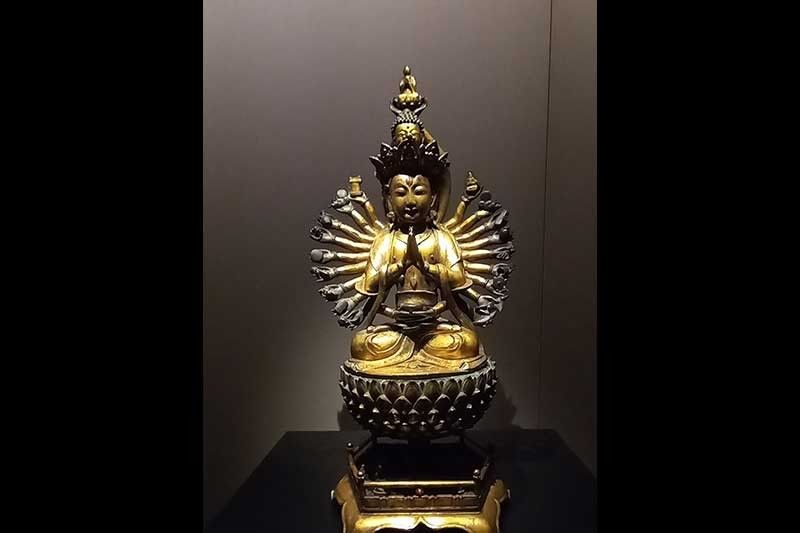
HONG KONG — After you marvel at the majestic Tsz Shan Monastery, a respite from the late-June heat is most needed at the Tsz Shan Monastery Buddhist Art Museum. Symbolizing inner contentment, it is located in a circular enclosure beneath the massive Guan Yin Statue.
Buddhism, the museum says, “is the fourth most popular religion in the world. Since its founding by Šäkyamuni in India during the 6th century BCE, Buddhism has been patronized by monarchs, propagated by monks and disseminated by travelling merchants.”
The introduction continues: “Through the Silk Road or by sea routes to regions outside of India, Buddhism cast profound influence on the religions of Sri Lanka in South Asia, Nepal and Tibet in the Himalayan regions, China, Korea and Japan in East Asia; and Indonesia, Cambodia, Thailand, Laos and Burma in Southeast Asia.
“It has not only enriched the connotations of Asian religions, but also given birth to Buddhist art traditions with distinctive characteristics.”
Pair of Standing Guanyin Bodhisattva, Polychrome stucco, China, Ming Dynasty 15th Century
After the Li Ka-shing Foundation, the philanthropic organization of Hong Kong’s richest man, opened the monastery in 2015, the dream of a museum naturally followed.
Li believed that Buddhist art can “soothe the mind and nourish the soul with its visual aesthetics.” Said to be Hong Kong’s first and only museum that is exclusively dedicated to Buddhist art and relics, precious Buddhist artifacts and objects from across Asia are on splendid display.
The monastery and the museum are considered by the Hong Kong Tourism Board as two of the city’s “Hidden Gems” that visitors must visit if they want a pause from the frenetic pace of this economic and tourism hub.
“Through unique exhibitions and cultural activities, we seek to interweave Buddhist art and culture, and present our visitors with a platform for art appreciation and spiritual nourishment,” its literature reads. “The Museum is set within a circular enclosure — denoting the freeing of the minds and accomplishing inner contentment — a state that we wish to have our visitors experience during their circumambulations.”
Moreover, the museum “aspires to promulgate Buddhist teachings, guiding our visitors in their journeys of appreciation of Buddhist art, thereby welcoming them to lead a purified, purposeful life.”
The current exhibit, “Variegated Iconography: A Rare Collection of Asian Buddhist Art,” presents Chinese Buddhist statuary as a foundation to showcase the stylistic characteristics of Buddhist art in relation to religious lineage in China.
Buddhist statuary from other Asian countries, such as India, Cambodia and Japan, are also displayed to allow visitors “to traverse frontiers to explore the circulation and interaction of Buddhist art across Asia.”

Bodhisattva Seated, Gilt Bronze, Ming Dynasty, 15th Century
The artifacts are organized under four different themes: Awe-Inspiring Dharma Protectors (Heavenly Kings), Divine Manifestations (arhats or Buddha’s disciples), Compassion and Vows (Bodhisattvas), and Majestic Buddha Light (various Buddhas), as well as their religious connotations
Admission to the museum is free. It is closed every Monday except when Monday falls on a public holiday.
An immersion on Buddhist art is definitely a welcome deviation from all the hustle and bustle that Hong Kong is known for, as the images epitomize this doctrinal essence: “The Dharma body has no form, forms emerge from the response of the being.”
RELATED: Tsz Shan Monastery: A Sense of Calmness in a bustling Hong Kong city


Be the first to comment